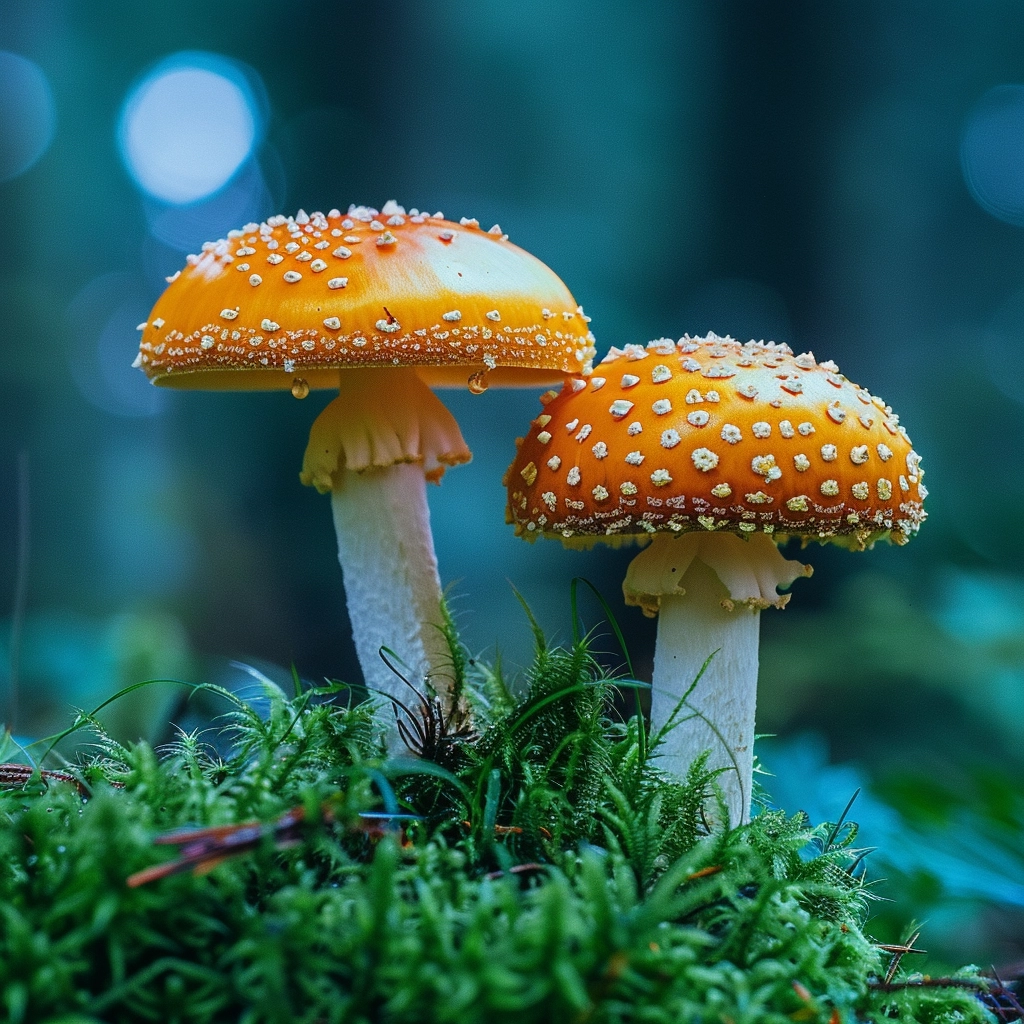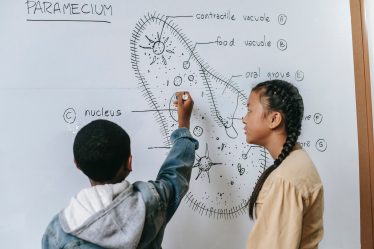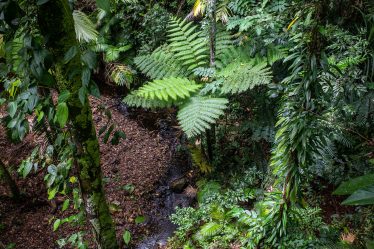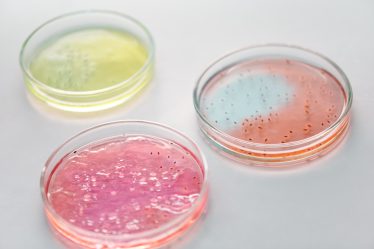
Fungi, a unique group of living organisms separate from plants and animals, include forms like yeasts, molds, and mushrooms. They are vital and indispensable in breaking down dead material, making nutrients available in the environment, and forming beneficial partnerships with plants. For instance, mycorrhiza enhances plant root absorption of water and nutrients. This introduction will explore the significant roles of fungi in ecosystems, their diversity, and their profound impact on nature and human activities.
Fungi, Yeasts and Moulds: Key Takeaways
In a hurry? Don’t worry. Our critical takeaways on fungi will give you a quick and easy summary of the main points:
🟠 Fungi serve diverse roles in ecosystems, including decomposing organic matter, forming symbiotic relationships with plants (mycorrhizae), and acting as beneficial organisms and pathogens.
🟠 In human industries, fungi are vital for producing antibiotics, alcoholic beverages, and cheese.
If you find fungi and yeasts challenging, don’t worry! Personalized tutoring or interactive biology lessons make these concepts more straightforward. Explore more biology topics and broaden your knowledge with our free Biology blogs.
Diverse Forms of Fungi
Fungi exhibit incredible diversity, ranging from single-celled organisms to complex multicellular structures. This diversity allows them to inhabit a vast array of environments and perform a variety of ecological roles. Among the many fungal forms, yeasts, molds, Aspergillus species, and the Basidiomycota group stand out for their unique characteristics and significant impacts.
How do we Categorize Fungi?
We broadly divide fungi into several major groups, each distinguished by unique characteristics in their reproduction and structure. These include:
- Chytridiomycota (Chytrids) are primarily aquatic fungi with simple, single-celled structures. Chytrids are unique for their motile spores with flagella.
- Zygomycota (Zygomycetes) are known for their role in food decomposition and as the source of common bread molds. They reproduce sexually through the formation of zygosporangia.
- Ascomycota (Sac Fungi) is the largest fungal group, including yeasts and molds. They are named for their reproductive structure, the ascus, a sac-like container for spores.
- Basidiomycota (Club Fungi) include mushrooms, toadstools, and puffballs. They are characterized by their reproductive structure, the basidium, which produces spores.
- Glomeromycota forms mycorrhizal relationships with the roots of most plants, facilitating nutrient exchange.
Yeasts: Unicellular Marvels
Yeasts are single-celled fungi that play essential roles in fermentation, making them invaluable in food and beverage production, such as bread, beer, and wine. Beyond their culinary uses, yeasts also contribute to biofuel production and pharmaceuticals, showcasing their versatility. They reproduce rapidly through budding, where a new cell grows directly from the original cell’s body.
Molds: Prolific Decomposers
Molds are multicellular fungi that thrive on organic matter and are crucial in decomposing dead plants and animals. Their ability to break down complex organic compounds makes them vital in nutrient cycling and soil health. While some molds can cause food spoilage and health issues, others, like Penicillium, that we use in cheese production and antibiotic synthesis.
Aspergillus: A Genus of Note
Aspergillus is a genus of molds known for its importance in industry and health. Industrially, Aspergillus species ferment products and produce enzymes and acids. However, certain species can harm human health, causing respiratory infections and allergies. Their study offers insights into fungal biology and pathogenicity.
Basidiomycota: The Mushroom Builders
The Basidiomycota group encompasses fungi that produce familiar mushrooms, rusts, and smuts that affect crops. These fungi are characterized by their reproductive structures, called basidia, where spores are produced. Mushrooms serve as the fruiting bodies for these reproductive processes. Basidiomycota are essential in the ecosystem; they decompose wood and form mycorrhizal associations with trees, enhancing forest health and diversity.
Fungi Glossary
- Aspergillus: A genus of molds known for its importance in medicine and industry, some species of which can cause respiratory infections.
- Basidiomycota: A division of fungi characterized by producing spores on basidia. Basidiomycota includes mushrooms, rusts, and smuts.
- Fungi: A kingdom of heterotrophic organisms vital to ecosystems, including yeasts, molds, and mushrooms. They have cell walls made of chitin.
- Lichens: Symbiotic associations between fungi and photosynthetic organisms (algae or cyanobacteria) necessary for soil formation and air quality indicators.
- Molds: Multicellular fungi that grow in filaments. They are known for their role in decomposition, and some species are used in food and medicine.
- Mycorrhiza: A symbiotic association between a fungus and the roots of a plant that enhances nutrient and water absorption.
- Pathogens: Microorganisms that cause diseases in their host, including plants and animals.
- Saprophytes: Fungi that feed on dead or decaying organic matter play a crucial role in nutrient recycling.
- Symbiosis: A close, long-term interaction between two biological species, which may benefit one or both parties.
- Yeasts: Single-celled fungi used in fermentation, producing bread, beer, and wine, and have roles in biotechnology.
Fungi in Ecosystems: Symbiosis and More
Fungi are integral to ecosystem health, engaging in symbiotic relationships and nutrient cycling. Beyond their role as decomposers, they form beneficial alliances with plants, contribute to soil formation, and support diverse life forms. This section delves into the symbiotic interactions between fungi and other organisms, highlighting mycorrhiza and lichens, and explores fungi’s dual roles as life-supporting partners and potential pathogens.
Mycorrhiza: The Root-Fungus Alliance
Mycorrhizae represent a symbiotic relationship between fungi and the roots of most terrestrial plants. These fungi extend the root system’s reach, enhancing water and nutrient absorption, while the plant supplies carbohydrates to the fungi. This alliance boosts plant growth and health and enhances soil quality by increasing its organic content and improving structure. We divide mycorrhizal fungi into two main types: ectomycorrhiza, which forms a sheath around plant roots, and arbuscular mycorrhiza, which penetrates the root cells. Both types play a pivotal role in natural and agricultural ecosystems by supporting plant nutrition and protecting against pathogens.
Benefits of Mycorrhizal Relationships
The interaction between mycorrhizal fungi and plants brings mutual benefits. Plants enjoy increased nutrient and water absorption, leading to stronger growth, enhanced drought tolerance, and better resistance against root diseases. In return, the fungi receive the plant’s vital carbohydrates and amino acids. This relationship is critical to maintaining ecosystem health, encouraging plant diversity, and facilitating the decomposition and recycling of organic materials. It underscores the indispensable role of mycorrhizal fungi in ecological sustainability and agricultural productivity.
Lichens: A Symbiotic Phenomenon
Lichens represent a remarkable symbiotic partnership between fungi and photosynthetic organisms, typically algae or cyanobacteria. This alliance forms entirely distinct organisms from their components, capable of thriving in some of the most extreme environments on Earth, from arctic tundras to rocky deserts. Lichens pioneer habitat colonization, breaking rock into soil and creating niches for other plant species to grow. Their presence indicates air quality and environmental health as bioindicators monitoring ecological changes and pollution levels.
The Role of Lichens in Ecosystems
In ecosystems, lichens play multiple roles. They are crucial in soil formation processes, initiating the breakdown of rocks through chemical means and accumulating organic matter that fosters soil development. Lichens also contribute to biodiversity, providing habitats and food sources for various organisms. Their ability to absorb and retain water benefits the surrounding microhabitats by maintaining moisture levels. As environmental sentinels, lichens reflect the health of their ecosystems, making them invaluable in ecological research and conservation efforts.
Saprophytes and Pathogens: Fungi’s Dual Roles
Fungi exhibit a dual nature in ecosystems, acting as saprophytes and pathogens. Saprophytic fungi decompose dead organic material, recycling essential nutrients into the ecosystem and maintaining soil health. This decomposition process is vital for the continuation of life cycles within ecosystems. Conversely, pathogenic fungi cause diseases in plants and animals, posing challenges to agriculture, forestry, and health. Understanding these roles is crucial for managing ecosystems and mitigating the impacts of fungal diseases.
Saprophytes: Nature’s Recyclers
Saprophytic fungi are the ecosystem’s recyclers, breaking down complex organic compounds in dead plants and animals into simpler substances. This recycling process enriches the soil, promoting plant growth and ensuring energy flow through food webs. By decomposing organic waste, saprophytes prevent the accumulation of dead material, playing an indispensable role in nutrient cycling and ecosystem sustainability.
Pathogenic Fungi: A Threat to Plants and Animals
Pathogenic fungi can significantly negatively impact plant and animal populations, causing various diseases that affect food security and biodiversity. In agriculture, fungal pathogens are responsible for crop losses and can necessitate costly management practices. In natural ecosystems, they can reduce biodiversity and alter habitat structures. Monitoring and managing pathogenic fungi are essential for protecting ecosystems, agricultural productivity, and animal health, underscoring the need for ongoing research and effective disease control strategies.
Fungi’s Impact on Human Life
Fungi profoundly impact human life, influencing various fields such as medicine, agriculture, and industry. Their dual nature as beneficial and harmful organisms underscores their complexity and the necessity for careful management and utilization. From discovering life-saving drugs to producing foods and biofuels, fungi are integral to many processes that sustain modern society. Yet, they can also pose significant challenges, especially in agriculture, where they are responsible for diseases that affect crop yield and quality.
Fungi in Medicine: From Penicillin to Modern Drugs
- Penicillin, from Penicillium notatum, was the first antibiotic.
- Fungi provide drugs for infections, cholesterol, and organ transplants.
- Research on fungi may lead to new cancer and disease treatments.
- Fungi are essential in drug development and health research.
Fungi in Agriculture: Friends and Foes
- Mycorrhizal fungi help plants grow better and improve soil.
- Pathogenic fungi can cause crop diseases and economic loss.
- Integrated pest management fights these harmful fungi.
- We must understand fungi’s roles in keeping agriculture healthy.
Fungi in Industry and Biotechnology
- Fungi produce enzymes, antibiotics, and acids for various uses.
- They are used in fermentation to make bread, beer, and cheese.
- Fungi help produce bioethanol, a renewable fuel.
- They clean pollutants from the environment (bioremediation).
- Genetic engineering of fungi is expanding their applications.
- Fungi are crucial for industry and environmental sustainability.
Are you curious about chemistry in daily life? Explore our simple experiments you can do at home!
Learn About Fungi with a Professional Tutor
Fungi have diverse roles in our environment and industries. They break down waste, partner with plants, cause diseases and are used in biotechnology. By studying fungi, we learn about their ecological impact, medical benefits, and industrial applications. Personalized education, like tutoring in mycology, can provide in-depth knowledge of these organisms and their complex interactions with our world.
If you’re searching for a biology tutor, a quick search for “biology tutor Liverpool” or “biology teacher Birmingham” on platforms like meet’n’learn can connect you with the ideal private teacher for your educational journey.
Those preferring group learning settings can find biology classes in their area by looking up “biology classes Leeds” or “biology lessons London” online, leading to community colleges or educational workshops.
Fungi, Yeast, Molds and Others: Frequently Asked Questions
1. What are fungi?
Fungi are a kingdom of organisms distinct from plants and animals, including yeasts, molds, and mushrooms. They are known for their roles in decomposition and symbiosis.
2. How do fungi reproduce?
Fungi reproduce by releasing spores that can grow into new organisms under the right environmental conditions.
3. What is mycorrhiza?
Mycorrhiza is a symbiotic association between fungi and plant roots, enhancing nutrient and water absorption for the plant.
4. Are all fungi beneficial?
No, while many fungi are beneficial as decomposers or symbionts, others can be harmful pathogens to plants and animals.
5. Can fungi be used in medicine?
Yes, fungi are used in medicine to produce antibiotics like penicillin and other pharmaceuticals.
6. How do fungi impact agriculture?
Fungi impact agriculture as beneficial symbionts, improving plant growth, and as pathogens that can cause diseases.
7. What role do fungi play in ecosystems?
Fungi play critical roles in ecosystems, mainly as decomposers recycling nutrients and as partners in symbiotic relationships.
8. Can fungi be used in biotechnology?
Yes, we use fungi in biotechnology because they can produce enzymes, antibiotics, and other valuable substances.
References:
1. Microbiology Society
2. Britannica
3. Wikipedia



